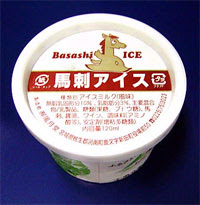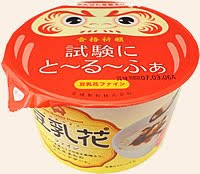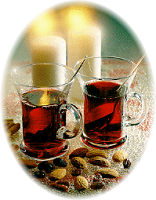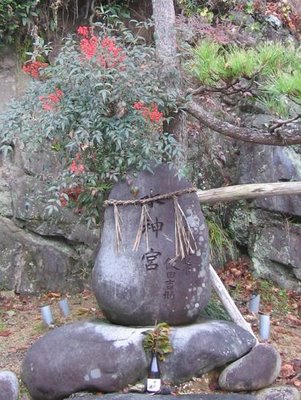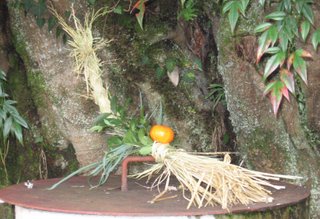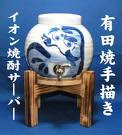[ . BACK to WORLDKIGO TOP . ]
::::::::::::::::::::::::::::::::::::::::::::::::::::::::::::::::::::::::::::::::::::::::::::::::::::
DRINKS for SUMMER
***** Location: Japan
***** Season: Summer
***** Category: Humanity
*****************************
Explanation
Most cold and iced drinks can be kigo for your area.
Drinks can come out cold of the refrigerator or be cooled with ice cubes.
Ice cubes are used all year round, but in summer they are "at their best", showing us the changes of the season, so to speak, as they melt.
After summer, they have to wait for three seasons to be back in full swing as a kigo for haiku, just like cherry blossoms.
:::::::::::::::::::::::::::::::::::::::::::::::::::::::::::::::::::::::::::::::::::::::::::::::::::
Early Summer
古茶新茶近ごろ呼吸合ひにけり
kocha shincha chikagoro kokyuu ai ni keri
old tea, new tea ...
lately we get along
in harmony
source : www.gendaihaiku.gr.jp
Tr. Gabi Greve
Kocha 古茶 (こちゃ) old tea, old green tea
hinecha 陳茶(ひねちゃ)
The green tea from last year. It has a different taste from the new one and is loved by many.
In the tea ceremony it is often used for a ceremony to celebrate the last use of the
furo hearth for summer,
furo no nagori 風炉の名残.
Shincha 新茶 (しんちゃ) new tea, new green tea
meditating
on a rainy day -
new green tea
Gabi Greve, 2008
with more details about the tea
:::::::::::::::::::::::::::::::::::::::::::::::::::::::::::::::::::::::::::::::::::::::::::::::::::::
Shoobuzake 菖蒲酒 (しょうぶざけ) Iris rice wine
ayamezake あやめ酒(あやめざけ), soobuzake そうぶ酒(そうぶざけ)
for the
Boy's Festival .
Prepared from the roots of iris, it is said to have medical properties. The custom comes from China.
:::::::::::::::::::::::::::::::::::::::::::::::::::::::::::::::::::::::::::::::::::::::::::::::::::
Mid-Summer
:::::::::::::::::::::::::::::::::::::::::::::::::::::::::::::::::::::::::::::::::::::::::::::::::::
Late Summer
Asajizake 麻地酒 (あさじざけ 朝生酒, 浅茅酒) asa jizake
"Hemp" local rice wine
"burried in the earth", tsuchikaburi 土かぶり(つちかぶり)
JIZAKE, a local rice wine.
This is a speciality from the old Tango and Higo provinces (Oita and Kumamoto in Kyushu), the old Hiji Han 日出藩(ひじはん). Prepared in winter, partly with glutinous rice (mochigome) like
amazake. The barrels are then burried in the earth in a hemp field until next summer.
Some legends of the origin of this drink have this to say:
Once a young monk burried some sweet amazake to drink it secretly later, and it turned out to gain in flavor over time. The lord of the domain heared of this sweet drink and made it a speciality of his area.
This famous drink was even presented to the Shogun in Edo.
爺婆の 昼間遊びや 麻地酒
jiji baba no hiruma asobi ya asajizake
grandpa and grandma
are enjoying it during midday -
this local rice wine
高桑蘭更 Takakuwa Ranko
フラスコや 影さえ見ゆる 麻地酒
furasuko ya kage sae miyuru asajizake
this flasque ...
I can even see the shadow
local rice wine
Issho 一招
Tr. Sakuo Nakamura
:::::::::::::::::::::::::::::::::::::::::::::::::::::::::::::::::::::::::::::::::::::::::::::::::::::
Kachiwari かちわり ice cubes
bukkaki ぶっかき、bukkakigoori ぶっかき氷(ぶっかきごおり)
a speciality of the Kansai area, where people take them in the mouth to cool down.
Umeshu 梅酒 (うめしゅ) Plum wine
ume shoochuu 梅焼酎(うめしょうちゅう)plum liquor
umezake うめざけ plume wine
:::::::::::::::::::::::::::::::::::::::::::::::::::::::::::::::::::::::::::::::::::::::::::::::::::
All Summer
Aisu アイス Ice cream, ice-cream, icecream
sofuto kuriimu ソフトクリーム soft cream
Aisukoohii, aisu koohii アイスコーヒー Iced coffee, ice coffee
hiyashi koohi 冷し珈琲(ひやしコーヒー), koorudo koohi, cold coffee コールドコーヒー、kooru koohi コールコーヒー、
cold black tea, hiyashi koocha 冷し紅茶(ひやしこうちゃ), aisu tii, iced tea アイスティー
Iced Coffee, aisu-koohii (Japan) Hot Coffee
© More in the WIKIPEDIA !
Eiskaffee
aisu tii アイスティー iced tea, ice tea (black tea)
hiyashi koocha 冷し紅茶(ひやしこうちゃ)cold black tea
© More in the WIKIPEDIA !
Eistee
:::::::::::::::::::::::::::::::::::::::::::::::::::::::::::::::::::::::::::::::::::::::::::::::::::::
amazake, ama zake 甘酒 (あまざけ, 醴 )
"over night drink", hitoyazake 一夜酒(ひとよざけ)
vendor of sweet ama zake,
amazake uri 甘酒売(あまざけうり)
shop selling sweet ama zake, amazakeya 甘酒屋(あまざけや)
sweet alcoholic drink made from fermented rice
Made from fermented glutinous rice gruel and yeast, letting it ferment for about six to eight hours. Its alcohol content is quite low, therefore it is a favorite with the ladies of my neighbourhood. They also use the
amazake mix we can by at the store to make soup or boil chicken and vegetables in it.

The basic recipe for amazake has been used for hundreds of years. Kōji is added to cooled whole grain rice causing enzymes to break down the carbohydrates into simpler unrefined sugars. As the mixture incubates, sweetness develops naturally.
Amazake can be used as a dessert, snack, natural sweetening agent, baby food, salad dressing or smoothie. The traditional drink (prepared by combining amazake and water, heated to a simmer, and often topped with a pinch of finely grated ginger) was popular with street vendors, and it is still served at inns and teahouses. Many Shinto shrines provide or sell this in the New Year. In the 20th century, an instant version became available.
Amazake is believed to be very nutritious, with no additives, preservatives, added sugars or salts. Outside of Japan, it is often sold in health food shops.
It is often considered a hangover cure in Japan.
© More in the WIKIPEDIA !
amazake uri 甘酒売り vendor of sweet amazake in Edo
It was well liked in Edo, since it provided liquid and some calories for the weary body in the humidity of the Japanese summer.

It was usually sold during the daytime, not considered a night drink.
The vendors carried a large iron Kettle and could make fire to warm it up.
. Food vendors in Edo .
- - - - -
 あま酒の地獄もちかし箱根山
あま酒の地獄もちかし箱根山
amazake no jigoku mo chikashi Hakoneyama
the hell
of the amazake shop is near -
Hakone mountains
There was a famous amazake chaya 甘酒茶屋 at Hakone pass.
source : www.japan-guide.com
愚痴無智のあま酒造る松が岡
guchimuchi no amazake tsukuru Matsugaoka
御仏に昼供へけりひと夜酒
mi-hotoke ni hiru sonaekeri hitoya-zake
能き人や醴三たび替にけり
yoki hito ya amazake mitabi kae ni keri
. Yosa Buson 与謝蕪村 in Edo .
- - - - -
甘酒の釜の光や昔店
amazake no kama no hikari ya mukashi mise
sparkling of the kettle
for sweet amazake -
this old shop
. - Masaoka Shiki 正岡子規 - .
- - - - -
寒菊や醴造る窓の前
. kangiku ya amazake tsukuru mado no saki .
Matsuo Basho 松尾芭蕉
- - - - -
. amazake matsuri 甘酒祭(あまざけまつり)
sweet ricewine festival
kigo for early summer
at
Obara shrine 大原神社 in the Tanba 丹波 region of Kyoto
.......................................................................
. Legends and Tales from Japan 伝説 - Introduction .
. amazake densetsu 甘酒と伝説 Legends about Amazake .
:::::::::::::::::::::::::::::::::::::::::::::::::::::::::::::::::::::::::::::::::::::::::::::::::::::
Ameyu 飴湯 (あめゆ) syrupwater
vendor of ameyu, ameyu uri 飴湯売(あめゆうり)
:::::::::::::::::::::::::::::::::::::::::::::::::::::::::::::::::::::::::::::::::::::::::::::::::::::
Biiru ビール (麦酒 ) Beer
kurobiiru 黒ビール(くろびーる) black beer, nama biiru 生ビール(なまびーる), lager beer
biyahooru ビヤホール beer hall
biyagaaden ビヤガーデン beer garden
kan biiru 罐ビール(かんびーる)beer in the tin/ canned beer, can beer
jibiiru, local beer 地ビール
. . . CLICK here for Photos !
Even our small town of Tsuyama has its own local beer and a beer festival in the shopping street in summer.
WASHOKU : jibiiru 地ビール Local Beer Special
:::::::::::::::::::::::::::::::::::::::::::::::::::::::::::::::::::::::::::::::::::::::::::::::::::::
Furumaimizu 振舞水 (ふるまいみず)
giving water to others
mizuburumai 水振舞(みずふるまい), settaisui接待水(せったいすい), mizusettai 水接待(みずせったい)
It was custom to give water to strangers who where passing on the road in summer.
:::::::::::::::::::::::::::::::::::::::::::::::::::::::::::::::::::::::::::::::::::::::::::::::::::::
Hiyazake 冷酒 (ひやざけ) cold rice wine
hiyashizake 冷し酒(ひやしざけ), reishu冷酒(れいしゅ)
Some people heat the sake just a bit to prevent a headache the next morning, this is also called "cold". It is best when served at room temperature, but lately "on the rocks" is popular too. There are a variety of small glasses for the summer consumption.
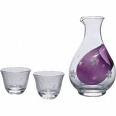 Rice wine (ricewine) sake, Japan
Rice wine (ricewine) sake, Japan Reiswein
:::::::::::::::::::::::::::::::::::::::::::::::::::::::::::::::::::::::::::::::::::::::::::::::::::::
Hyooka 氷菓 (ひょうか) "ice and cakes"
koorigashi 氷菓子(こおりがし), aisu kuriimu, ice creamアイスクリーム,
sofuto kuriimu, soft cream ソフトクリーム
kuriimu sandii クリームサンデー
shaabetto, sherbet シャーベット、ogura aisu 小倉アイス(おぐらあいす)
azuki aisu 小豆アイス(あずきあいす) with adzuki beans
aisu monaka アイス最中(あいすもなか) wafer with ice
aisukyandii, ice candy アイスキャンデー
There are some special flavors for soft cream, using the local produce.
In Aomori at Osorezan, there is soft cream with yomogi (mugwort). It looks quite green and delicious.
Beifuss-Eis
On the Oga peninsula in Akita, there is soft cream with corn (toomorokoshi).
:::::::::::::::::::::::::::::::::::::::::::::::::::::::::::::::::::::::::::::::::::::::::::::::::::::
Koorimizu 氷水 (こおりみず) water with ice shavings
natsugoori 夏氷(なつごおり), kezurihi 削氷(けずりひ)shaved ice
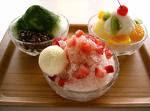
kakigoori かき氷(かきごおり),
shaved ice with flavor topping
kanrosui 甘露水(かんろすい)
koori azuki 氷あずき(こおりあずき), koori kintoki 氷金時(こおりきんとき)
koori jiru氷じるこ(こおりじるこ),
koori ichigo 氷いちご(こおりいちご)with strawberries
koori remon 氷レモン(こおりれもん) with lemon
koori uji 氷宇治(こおりうじ)with green tea
koori mitsu 氷蜜(こおりみつ)with honey or sweet syrup
mizore みぞれ
store which sells ice 氷店(こおりみせ)koorimise
MORE - different types of local ice cream
. koorimizu uri 氷水売り vendors of "ice water" .
in Edo
. himuro 氷室 (ひむろ) icehouse, ice cellar
and ice offerings at Shinto shrines
:::::::::::::::::::::::::::::::::::::::::::::::::::::::::::::::::::::::::::::::::::::::::::::::::::::
Kuzumizu 葛水 く(ずみず) arrowroot water
Boiled and mixed with sugar, then cooled and served with ice cubes. Arrowroot has medical properties to help with summer problems of the heat and prevents heavy sweating.
Mugiyu 麦湯 (むぎゆ) Barley tea
mugicha, mugi-cha 麦茶(むぎちゃ), mugicha hiyashi 麦茶冷し(むぎちゃひやし)
mugiyu hiyashi 麦湯冷し(むぎゆひやし
One of the most popular family drinks, prepared in every home in great quantities. Gerstentee
Satoo mizu 砂糖水 (さとうみず) sugar water
Seiryoo inryoosui, soft drinks
清涼飲料水 (せいりょういんりょうすい)
tansansui 炭酸水(たんさんすい)carbonated drinks
ramune ラムネ lemonade
saidaa サイダー cider, cold apple cider, Apfelmost
shitoron シトロン citron drink , lemonade
sooda sui ソーダ水(そーだすい)
soda water, puren sooda プレンソーダ plain soda
sukasshu, squash スカッシュ, remon sukasshu レモンスカッシュ lemon squash
orenji sukasshu 、オレンジスカッシュ orange squash
kuriimu sooda, cream soda クリームソーダ
koora, kokakoora コーラ, コカコーラ
Coca Cola, coke
Coke and Pepsi Cola in Japan
juusu ジュース, juice
mikan sui 蜜柑水(みかんすい) mikan and water, remon sui レモン水(れもんすい) lemon and water, budoo sui 葡萄水(ぶどうすい) grape juice , hakka sui 薄荷水(はっかすい) peppermint water, nikkei sui 肉桂水(にっけいすい)cinamon water
mirukuseeki, milk shake ミルクセーキ
hirano sui 平野水(ひらのすい) soft drink
HOT apple cider and other hot drinks
Drinks Winter Kigo
:::::::::::::::::::::::::::::::::::::::::::::::::::::::::::::::::::::::::::::::::::::::::::::::::::::
Shinshu hi-ire 新酒火入 (しんしゅひいれ)
heating new rice wine
sake niru 酒煮る(せけにる), sakeni 酒煮(さけに)
nizake煮酒(にざけ)
Rice wine prepared in winter is heated up to 60 degrees centigrade, to make it last during the hot summer. It is then filled in pine barrels and gives a pleasant smell to the sake brewery. After heating the rice wine is not called SHIN, new, any more, but KO, old 古酒.
:::::::::::::::::::::::::::::::::::::::::::::::::::::::::::::::::::::::::::::::::::::::::::::::::::::
Shoochuu 焼酎 (しょうちゅう) Shochu, strong distilled liquor, schnaps
awamori 泡盛(あわもり)from Okinawa
kasutori shoochuu 粕取焼酎(かすとりしょうちゅう)
imojoochuu 甘藷焼酎(いもじょうちゅう)from potatoes
kibijoochuu黍焼酎(きびじょうちゅう)from kibi millet
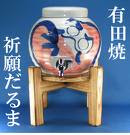 Shochu dispenser from Arita Pottery
Shochu dispenser from Arita Pottery
with Daruma decoration
:::::::::::::::::::::::::::::::::::::::::::::::::::::::::::::::::::::::::::::::::::::::::::::::::::::
Su tsukuru 酢作る すつくる making vinegar
The Three Vinegar Tasters
..... Making Soy Sauce
:::::::::::::::::::::::::::::::::::::::::::::::::::::::::::::::::::::::::::::::::::::::::::::::::::::
一生の楽しきころのソーダ水
isshoo no tanoshiki koro no sooda sui
soda water
at a time when I enjoyed
my life
Tomiyasu Fuusei 富安風生
. Tomiyasu Fuusei 富安風生
:::::::::::::::::::::::::::::::::::::::::::::::::::::::::::::::::::::::::::::::::::::::::::::::::::::
pebbled path
a red wagon filled
with soda bottles
John Wisdom, Florida
*****************************
Related words
Drinks
WINTER SAIJIKI
*****
WASHOKU : jibiiru, Local Beer Special
*****
WASHOKU DRINKS
WASHOKU ... Japanese Food SAIJIKI
ricewine, Reiswein,
:::::::::::::::::::::::::::::::::::::::::::::::::::::::::::::::::::::::::::::::::::::::::::::::::::

